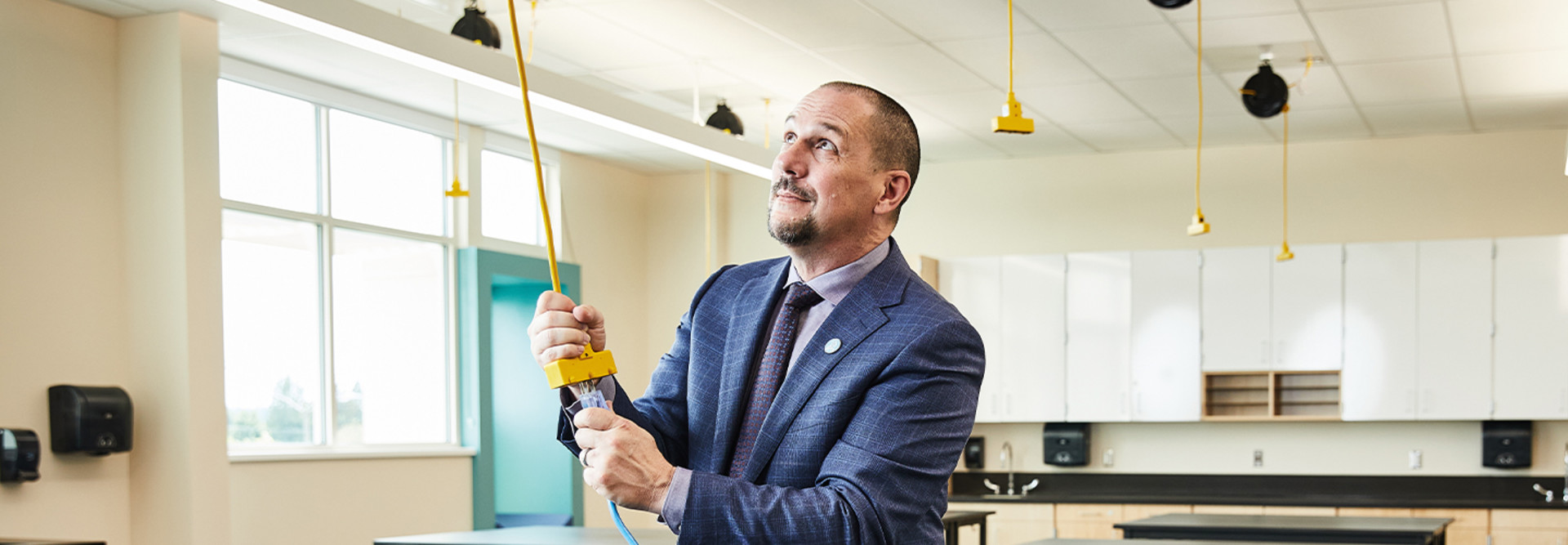For some school districts, these updates are long overdue. According to a June 2020 report to congress by the U.S. Government Accountability Office, “school buildings in over half of U.S. districts are in grave disrepair, needing major updates in everything.”
So, while many physical facilities needed upgrades long before 2020, COVID-19 has accelerated some districts’ efforts. Their projects run the gamut from revamping existing classrooms to building entirely new campuses that better meet the needs of today’s tech-savvy students.
These modern learning spaces bring together flexible furniture, mobile devices, robust Wi-Fi and large TV displays or projectors to optimize learning. In “Clever Classrooms,” a 2015 study on classroom design in the U.K. by the University of Salford, researchers found that flexible classrooms encourage collaboration and creativity; enable new pedagogies, such as blended, personalized or project-based learning; and improve student engagement.
Upgrades Arrive for Classroom Tech and IT Infrastructure
Portland’s initial projects focused on renovating or rebuilding eight of its oldest schools to improve health and safety across the district. However, the district will also upgrade its aging IT infrastructure and equip classrooms throughout the district with new technology, says Wolff.
Wolff and his staff will deploy the technology in every classroom in three to five years. “We will combine school infrastructure upgrades with classroom modernization, so we only have to touch each school once,” he says.
Today, most of Portland’s classrooms have bare-bones technology. They have a cart with a projector and document camera tethered to an antiquated computer. About half the schools have Wi-Fi inside classrooms, but most of the access points are old. The other half of the schools only have access points in the hallways.
To remedy that, the district will install a new Wi-Fi access point in every classroom, along with a new mounted projector and screen, a Chromebox computer and an Airtame 2 screen-sharing device for teachers to wirelessly share videos and websites, Wolff says. Each room will also include a voice amplification system with a teacher microphone.
LEARN MORE: Explore free CDW resources for designing and building the future of K–12 education.
This fall, the IT staff will also roll out a one-to-one initiative and begin issuing CTL Chromebooks to students in grades three through 12.
Wolff says experience with remote instruction during COVID-19 “changed our entire instructional model. Now, teachers can take what they’ve learned in the past year, and with new classroom tools, create more engagement and authentic learning in the classroom.”
Flexible Space Is Key to the Future of Learning
The need to manage space for social distancing will probably remain long after the pandemic. Some new schools will make this easier to achieve with open learning spaces and flexible furniture.
“With the furniture, it’s definitely about mobility and flexibility,” says Mike Peters, CDW•G’s senior manager of education strategy and transformation. “Teachers can easily move desks and chairs with wheels, so day to day, they can adapt for a collaborative project or a lecture-style environment.”
In Portland, when the new Lincoln High School campus opens in fall 2022, classrooms will include desks with casters so teachers and students can easily reconfigure rooms for different activities. Outside the classrooms, each of the six floors will feature two open collaborative learning spaces and include digital video displays and different furniture.
Some 1,800 miles away in Texas, Superintendent Michael Kuhrt of the Wichita Falls Independent School District also has an eye on flexibility with two new schools set to open in 2024.
“Traditional schools don’t serve the needs of a 21st century learner,” Kuhrt says. “We want to give students a flexible schedule, flexible spaces and flexible learning modes.”












